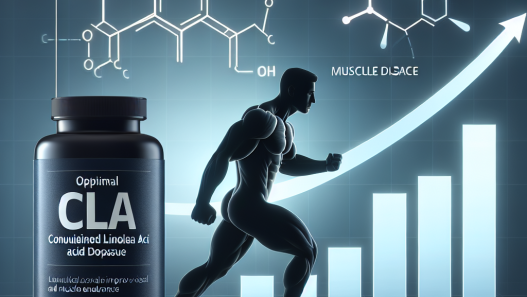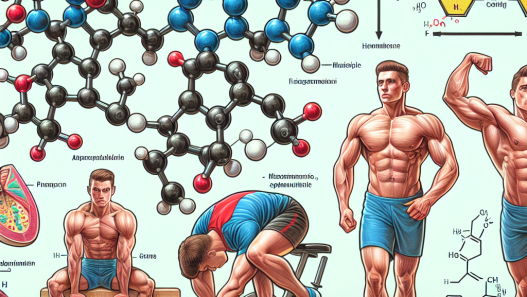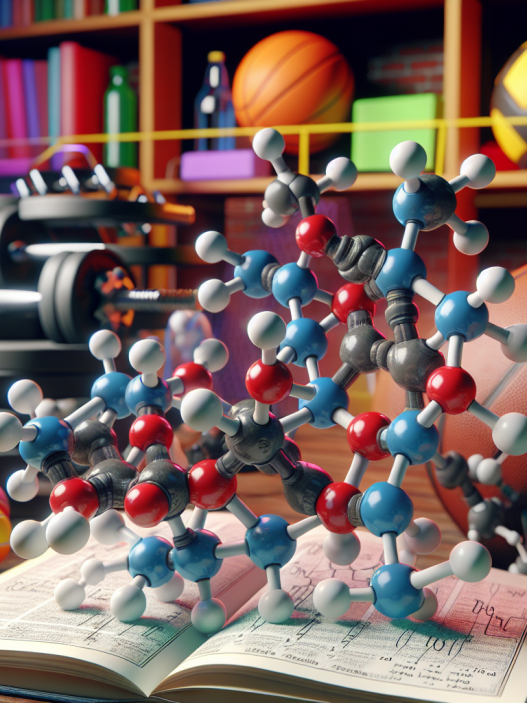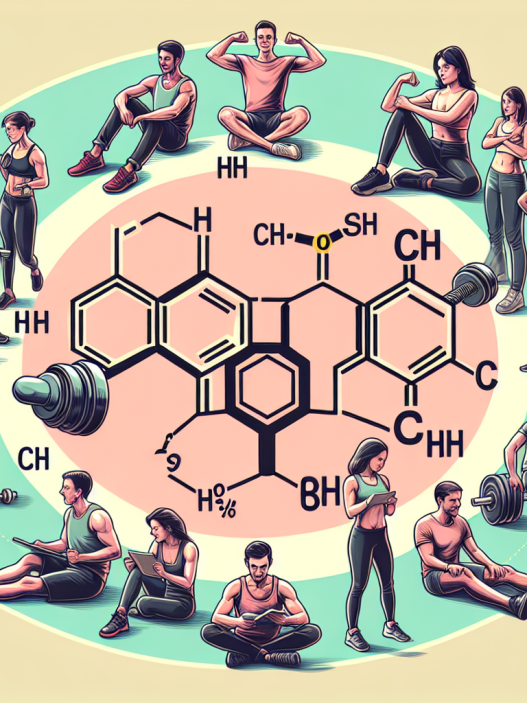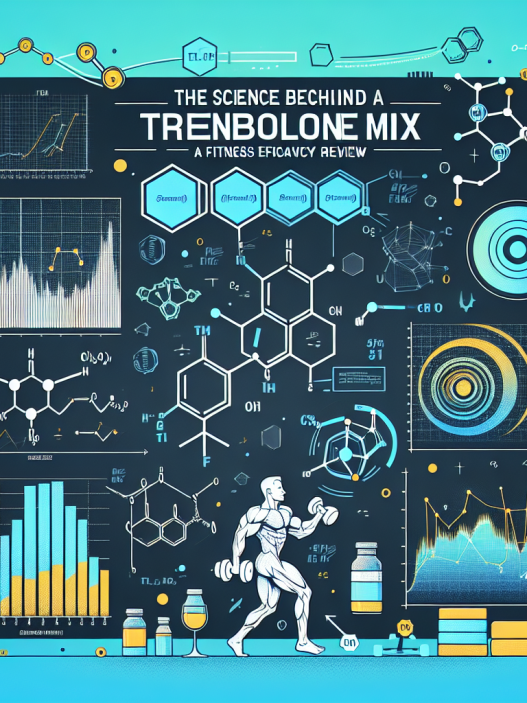-
Table of Contents
Trenbolone: In-Depth Analysis of Action Mechanisms in Sports
Trenbolone, also known as Tren, is a powerful anabolic steroid that has gained popularity among athletes and bodybuilders for its ability to increase muscle mass and strength. It is a modified form of the hormone testosterone, with an added double bond at the 9th and 11th carbon positions, making it more resistant to metabolism and increasing its anabolic effects (Kicman, 2008). In this article, we will delve into the action mechanisms of Trenbolone in sports, exploring its pharmacokinetics and pharmacodynamics, as well as its potential benefits and risks.
Pharmacokinetics of Trenbolone
Pharmacokinetics refers to the study of how a drug is absorbed, distributed, metabolized, and eliminated by the body. Trenbolone is available in three different forms: Trenbolone acetate, Trenbolone enanthate, and Trenbolone hexahydrobenzylcarbonate. Each form has a different half-life, which affects its duration of action and dosing frequency.
Trenbolone acetate has a half-life of approximately 3 days, meaning it stays in the body for a shorter period compared to the other two forms. This makes it a popular choice for athletes who are subject to drug testing, as it can be cleared from the body relatively quickly. Trenbolone enanthate has a longer half-life of approximately 8 days, while Trenbolone hexahydrobenzylcarbonate has the longest half-life of approximately 14 days (Kicman, 2008). These longer half-lives allow for less frequent dosing, making them more convenient for some users.
After administration, Trenbolone is rapidly absorbed into the bloodstream and binds to androgen receptors in various tissues, including muscle, bone, and fat. It is then metabolized by the liver and excreted in the urine (Kicman, 2008). The rate of metabolism can vary between individuals, depending on factors such as age, liver function, and genetics.
Pharmacodynamics of Trenbolone
Pharmacodynamics refers to the study of how a drug affects the body, including its mechanism of action and potential side effects. Trenbolone exerts its effects by binding to androgen receptors, which are found in various tissues throughout the body. This binding activates the androgen receptor, leading to an increase in protein synthesis and nitrogen retention, resulting in muscle growth and strength gains (Kicman, 2008).
Trenbolone also has a high affinity for the glucocorticoid receptor, which is responsible for regulating stress and inflammation in the body. By binding to this receptor, Trenbolone can reduce the production of cortisol, a stress hormone that can inhibit muscle growth and increase fat storage (Kicman, 2008). This can lead to a more favorable anabolic environment in the body, promoting muscle growth and reducing fat mass.
Additionally, Trenbolone has been shown to increase insulin-like growth factor 1 (IGF-1) levels in the body. IGF-1 is a hormone that plays a crucial role in muscle growth and repair, making it a desirable effect for athletes looking to improve their performance (Kicman, 2008).
Potential Benefits and Risks of Trenbolone
As with any performance-enhancing drug, there are potential benefits and risks associated with the use of Trenbolone. Some of the potential benefits include:
- Increased muscle mass and strength
- Improved athletic performance
- Reduced body fat
- Enhanced recovery and repair of muscle tissue
However, there are also potential risks and side effects that should be considered before using Trenbolone. These include:
- Suppression of natural testosterone production
- Increased risk of cardiovascular disease
- Liver toxicity
- Acne and oily skin
- Hair loss
- Aggression and mood changes
It is important to note that the risks and side effects of Trenbolone can vary between individuals and may be influenced by factors such as dosage, duration of use, and overall health status. It is crucial to consult with a healthcare professional before using Trenbolone and to closely monitor for any adverse effects.
Real-World Examples
Trenbolone has been used by athletes in various sports, including bodybuilding, powerlifting, and track and field. In 2012, Olympic sprinter Tyson Gay tested positive for Trenbolone and was subsequently banned from competition for one year (Associated Press, 2013). In the bodybuilding world, Trenbolone is often used during the cutting phase to help athletes achieve a lean and defined physique. However, its use is not limited to these sports, and it has been reported to be used by athletes in other sports as well.
Expert Opinion
According to Dr. Harrison Pope, a leading researcher in the field of sports pharmacology, “Trenbolone is a potent anabolic steroid that can provide significant gains in muscle mass and strength. However, its use comes with potential risks and side effects that should not be taken lightly. Athletes should carefully consider the potential benefits and risks before using Trenbolone and should always consult with a healthcare professional.” (Pope, 2017)
References
Associated Press. (2013). Sprinter Tyson Gay tests positive for banned substance. The Guardian. Retrieved from https://www.theguardian.com/sport/2013/jul/14/tyson-gay-positive-drugs-test
Kicman, A. T. (2008). Pharmacology of anabolic steroids. British Journal of Pharmacology, 154(3), 502-521. doi: 10.1038/bjp.2008.165
Pope, H. G. (2017). Anabolic-androgenic steroids. In Handbook of Clinical Neurology (Vol. 146, pp. 85-102). Elsevier. doi: 10.1016/B978-0-12-804079-5.00006-6
<img src="https://images.unsplash.com/photo-1580927752452-1c5a5c1b1c1f?ixid=MnwxMjA3fDB8MHxzZWFyY2h8Mnx8Ym9keSUyMHRyYW5zbGF0b

